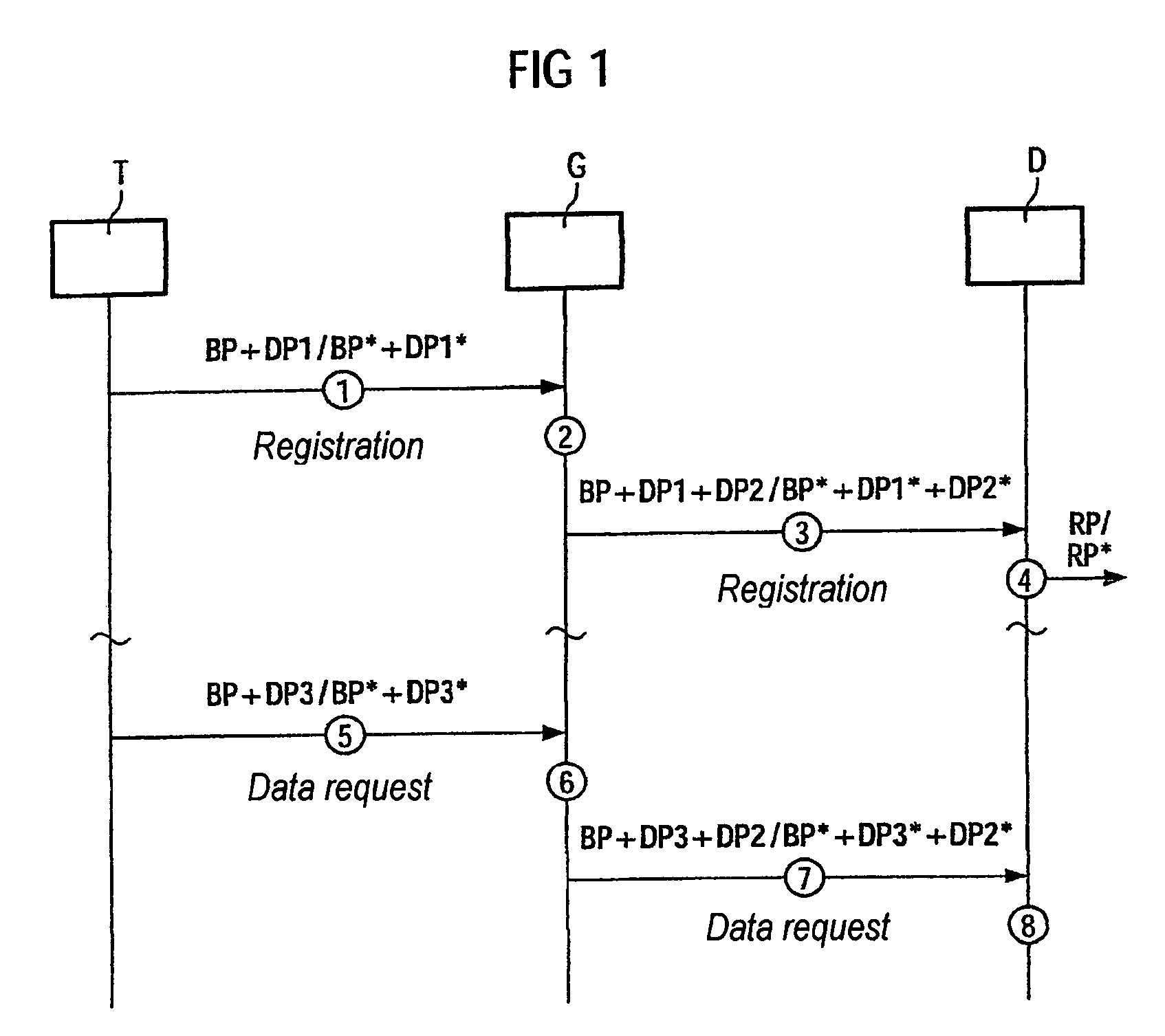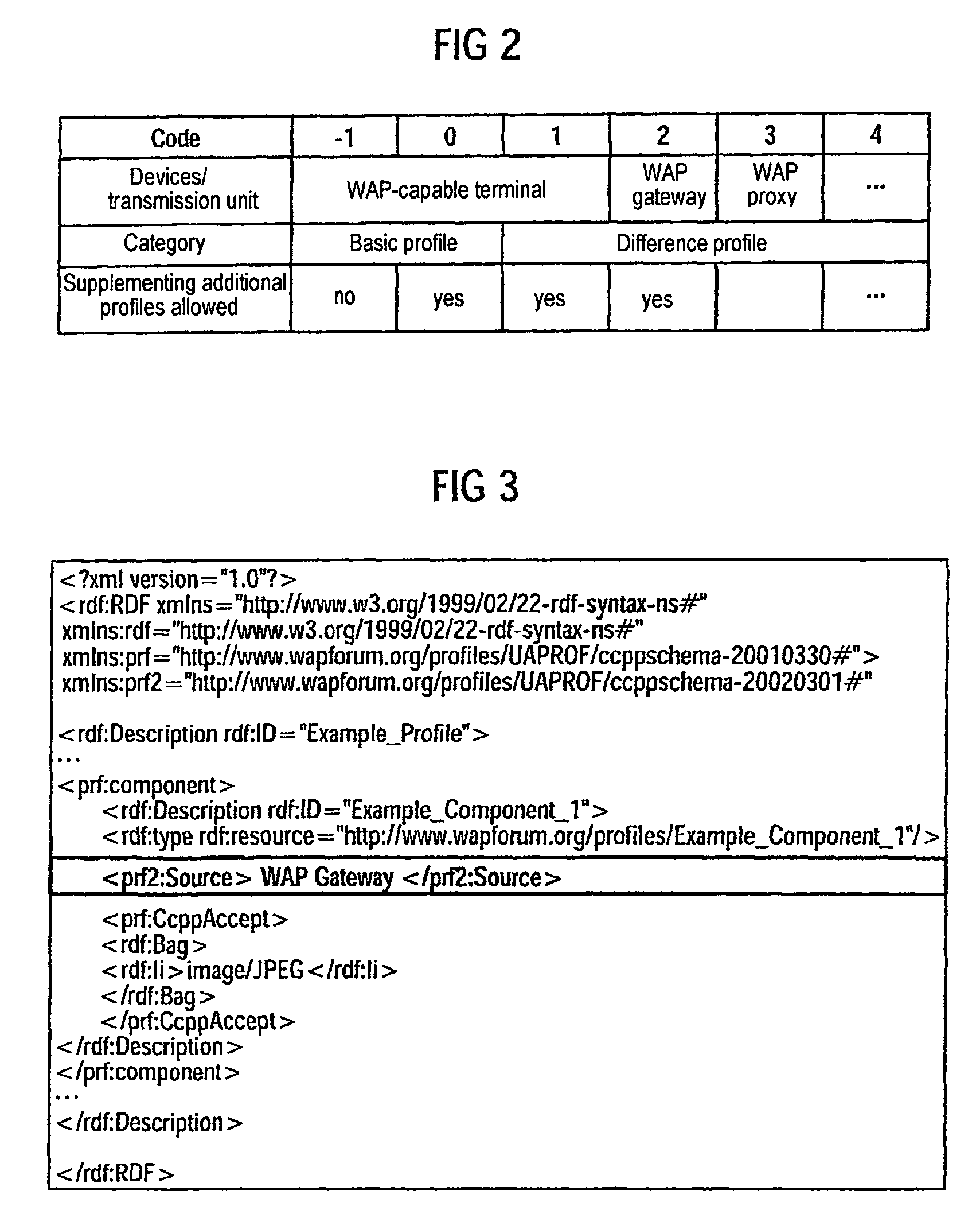The data supply component, however, now no longer can distinguish between the original capabilities of the telecommunication device and the additional capabilities of the overall
system of WAP-capable telecommunication device and WAP gateway.
Problems may arise however, when the file types requiring conversion by the WAP gateway are enclosed (packed) into another
data format which cannot be suitably handled by the WAP gateway.
1.
Digital Rights Management (DRM): The solution currently specified in the WAP Forum for managing rights of protected digital objects is based on the fact that the object is transported in a container file or in a container, which, for unencrypted objects is of type “application / vnd.wap.drm.message” and for encrypted objects is of type “application / vnd.wap.drm.content.” With unencrypted objects there is theoretically the option for a WAP gateway to access the enclosed object and to change it, but there is no explicit provision for this to be done. With encrypted objects the WAP gateway has no possibility of accessing the object since it does not have the key and the data, therefore, only appears as a binary packet. Even when the enclosed object is an image of the type known to the WAP gateway which, accordingly, could be converted into another type, this is not possible in the case described. The enclosed object would be passed on unchanged by the WAP gateway to the telecommunication device on which it would not be able to be displayed.
2.
Multimedia Messaging Service (MMS): In the MMS the message is transmitted in the form of a
Multimedia Message (MM) from a so-called MMS-
Relay /
Server (which serves as an MMS switching unit in a network) to an MMS
Client, a specific application on the WAP-capable telecommunication device. In the solution specified by the WAP Forum the MM is a message with binary codes for presentation of the header fields which are not known to the WAP gateway. The messages are of type “application / vnd.wap.mms-message” and contain the objects to be transferred. The WAP gateway, in its turn, has the opportunity of extracting the objects from the message and adapting them to the features of the receiving telecommunication device. If an object of a specific type, requiring conversion by the WAP gateway, is integrated into the MMS message by the MMS
Relay Server, the WAP gateway cannot perform its task, wherein the object arrives at the telecommunication device unchanged and cannot be used there. Furthermore, the fact that formation of an overall profile, as has been described above, makes it no longer possible to distinguish between how the integral components of the characteristics of the telecommunication device (possibly with additional hardware components) and the additional characteristics of the
system made up of telecommunication device and WAP gateway also may have a negative effect if, for example, an object can be offered in different formats by the data supply component, of which some require a conversion by the WAP gateway to enable them to be processed by the telecommunication device, and others can be forwarded unchanged from the WAP gateway to the telecommunication device. Here, the
server-side (i.e., from the data supply component) selection of a format which requires
no conversion by the WAP gateway is advantageous since a conversion can lower the quality of the object, additional time is needed for downloading the object for conversion, computing power is required in the WAP gateway and the user can incur additional costs, depending on the billing model.
 Login to View More
Login to View More  Login to View More
Login to View More 


